Ethiopian Coffee Story which brand of Ethiopian coffee beans is good

Professional coffee knowledge exchange more coffee bean information please follow the coffee workshop (Wechat official account cafe_style)
Ethiopia is currently the largest coffee producer in Africa, but only 60% of the beans are exported, while the rest are used in various forms of ceremony. for example, at weddings, coffee beans are mixed with coffee syrup, coffee and honey, and various herbs to ward off bad luck. Thus it can be seen that coffee is an inseparable part of local life. Ethiopia Yega Chuefei is considered by many to be synonymous with Ethiopian boutique coffee. There is a washed Yega in the coffee rations beans in Qianjie Coffee, which represents the most typical flavor of Yega Xuefei producing area. Qianjie Coffee launched a series of rations beans, which is considered not only to reflect the basic flavor of the producing area to deepen recognition, but also to have the characteristics of low price and high performance-to-price ratio.

Starbucks proposed the "commitment to caffeine producing area (Commitment to Origins; referred to as CTO)" program in 2003, and launched the "Fair Trade Coffee beans". Taking care of coffee farmers became Starbucks' emphasized brand image. But this is not the case!
Starbucks has vigorously promoted Ethiopia as the birthplace of coffee. Starting from March 2006, the Ethiopian government began to propose to the United States Patent and Trademark Office the hope that coffee beans from three places of Ethiopian coffee brands-Sidamo, Harar and Yirgacheffe-could be named and registered trademarks in order to have more control over coffee marketing and promotion. Fighting for better prices for coffee farmers has been blocked by coffee retail giants such as Starbucks.
Ethiopian farmers sell coffee beans to Starbucks for only 75 cents a pound, while Starbucks sells them for $13 a pound, with a price difference of 34 times.
The lawsuit between Ethiopia and Starbucks
In order to gradually increase Ethiopia's coffee export income and improve the lives of 15 million people in the coffee industry, the Ethiopian government launched the "High quality Coffee Trading and Marketing and Authorization pilot Program" (Fine Coffee Trade Marking and Licensing Initiative), a key step of which is to obtain trademark protection for Ethiopian specialty coffee. Starbucks initially denied the allegations, arguing that registered trademarks were not the best way to help farmers, but should adopt regional certification, as in France's model of fine wine. But in the end, Starbucks, an American caffeine chain, signed an agreement with the Ethiopian government on May 9, 2007, agreeing to respect the patent rights of unique Ethiopian coffee varieties on the labels of Starbucks products. put an end to the long-standing trademark dispute between the two sides.
Through the success of this trademark case, it is hoped that thousands of coffee farmers and their families in Ethiopia will be able to extricate themselves from poverty, help their children go to school and receive better health care.
Qianjie Coffee has learned that almost all Starbucks coffee beans are moderately roasted. Ethiopian coffee beans are mainly characterized by floral citrus, while Starbucks' moderate roasting masks its original flavor. Qianjie Coffee has recently been collected from different producing areas for evaluation, including those from Ethiopia. In fact, coffee tasting is a link that Qianjie coffee has always been doing. The original intention of Qianjie coffee is not to sell beans, but to taste coffee beans from all over the world. In this process, the purpose of Qianjie Coffee is to understand each coffee producing area, different coffee varieties in the same producing area, different treatments of the same coffee variety, and to establish a corresponding database, as well as the comparison between different coffee producing areas. Qianjie Coffee hopes to let more coffee lovers know about the world of coffee.

Coffee cultivation in Ethiopia
Since Ethiopia changed the administrative division around 1995, the greatest impact on the coffee area is that the original Sidamo Sidamo province is divided into the new Sidamo Sidama (the original minority), and most of it is classified into the Oromia Oromia state. And Yega Xuefei, which used to belong to Sidamo Province, is now classified as the new Gedeo of Gaidio District. Now there will be a mixture of new and old regional names in the Ethiopian coffee products in circulation on the market. Here we take the new regional division as the benchmark, combined with the administrative region to understand the Ethiopian coffee planting map.
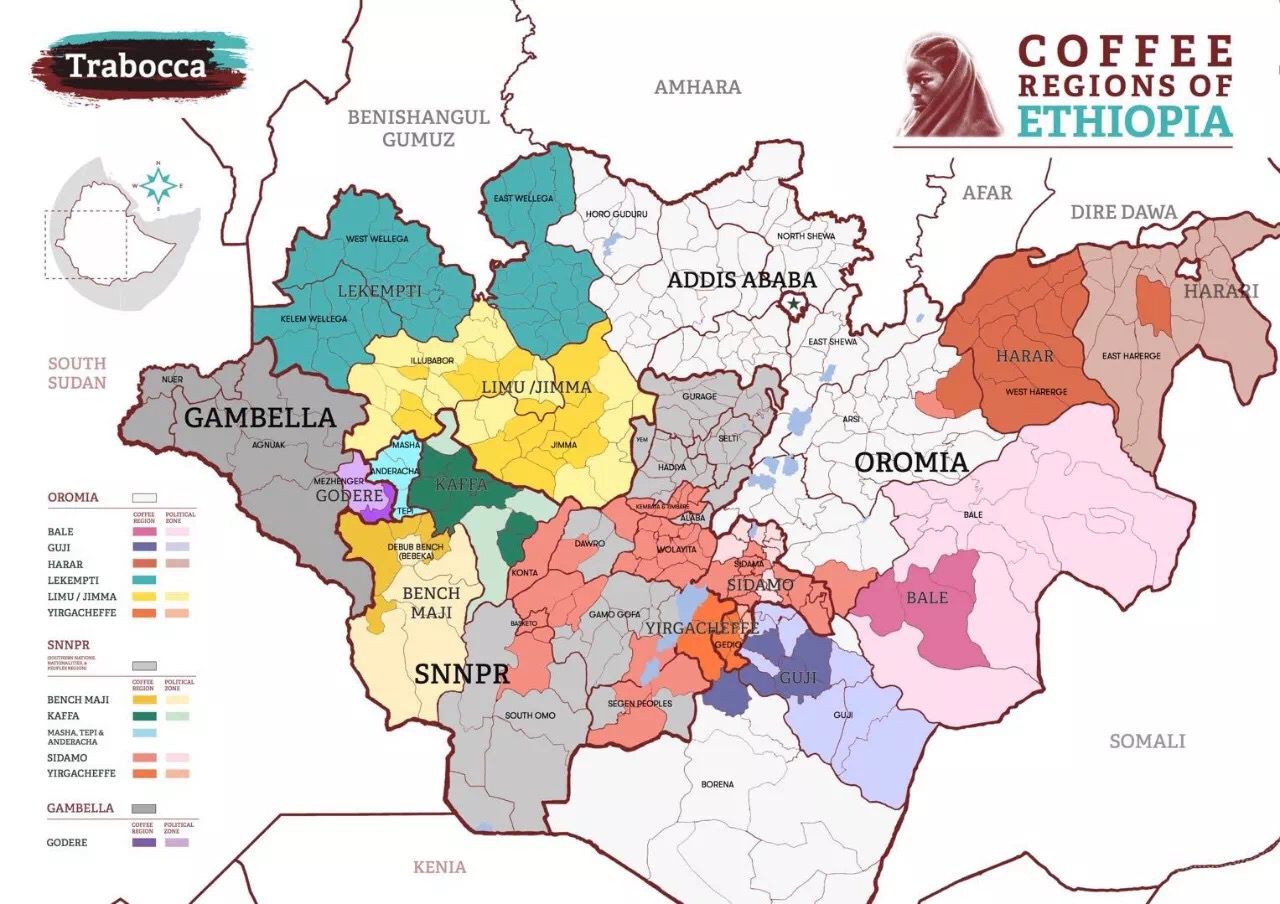
Coffee cultivation in Ethiopia is mainly in the western and southern region, and small-scale farmers account for 90% of the total cultivation. Nearly 1.2 million of small-scale farmers make a living by growing coffee, with an average planting area of less than 4 hectares, an average altitude of 1000-2300 meters, a planting density of 1000-1800 coffee trees per hectare, and a yield of nearly 600kg per hectare.
Ethiopia's coffee cultivation is divided into:
● forest coffee forest coffee (8-10%), coffee trees and other crops coexist in the primeval forest, without any artificial care, farmers will pick coffee fruits regularly.
● forest-semi-forest coffee semi-forest coffee (30-35%), the coffee planting area is between the forest and the range of farmers' lives, coffee trees are naturally produced varieties like forest coffee, and farmers will manage coffee planting areas and grow other cash crops.
● pastoral coffee garden coffee (50-55%), coffee trees are planted around farmers' living areas, and most of them are grown by farmers themselves.
● Plantation Coffee plantation coffee (5-6%), a large private grower, has more treatment facilities and production capacity.
Nine major coffee producing areas in Ethiopia
1. Yega Xuefei (boutique producing area): 1800-2000 meters above sea level (pastoral coffee system)
Yega Xuefei is affiliated to the Sidamo producing area, which is separated separately because of its unique flavor. In addition to the small town of Yega Xuefei, it also includes three by-product areas around Wenago, Kochere, Gelena and Abaya. Therefore, Yirgacheffe A, Wenago A, Kochere An and Gelena/AbayaA will be more expensive than B of the same name in the new Yega Sheffield rating system.
The so-called Yega Chuefei flavor refers to the strong aroma of jasmine, lemon, peach, almond and tea. Qianjie Coffee thinks that "flowers in full bloom" is the most appropriate description.
Traditionally, Yega Xuefei uses the oldest sun treatment, but in 1972, Ethiopia introduced Central and South American water washing technology to improve the quality of coffee, which made the jasmine and citrus fragrance clearer and brighter. Qianjie coffee believes that the most essential difference between water washing and tanning. Water washing is the most basic flavor of coffee, which can most directly reflect the special flavor of the producing area. On the other hand, the solarization method will add sweet aroma and fermented feeling to this basic flavor.
Because of the introduction of water washing, Yega Xuefei has become the representative of fine coffee in the world. since the 1970s, this area has become the most popular water-washed bean producing area in Ethiopia. However, in the 21st century, the sun technology has gradually improved, and amazing sun beans have been introduced frequently. This is due to Baghi, a coffee trader in Yejasuefei. Because he misses the traditional flavor of sun-dried beans, the sun-drying technology is gradually replaced by water washing, so he improved the treatment of sun-dried beans to improve the flavor and reduce the proportion of defects, and launched three very famous Yejasuefi sun-dried beans, namely, Idido Misty Valley, Beloya and Aricha.

In addition to washing and tanning, there are other treatment methods, such as red honey, anaerobic and so on. Qianjie Coffee has tested a red honey Yega Chevy before the cup, which adds layers to maintain the original basic flavor. The taste is lighter than the sun Yega Chefe, and thicker than the water washed Yega Chuefei.

2. Sidamo (boutique producing area): 1400-2200m above sea level (pastoral coffee system)
Sidamo coffee, which is delicately washed or sunburned, is usually sweet, and the strawberry flavor is loved by many coffee lovers and is worth as much as Yega Chuefei. The varieties of Sidamo and Yega Xuefei are similar, with medium-sized beans but also small seeds of dwarf plants, which farmers often sell separately. One of the most popular coffee beans in Sidamo is Sakuran, which has been a blockbuster since it was unveiled in Ethiopia's raw bean competition TOH in 2017, breaking Rosa's monopoly in the brewing competition and becoming the only coffee that can compete with it. Huakui comes from Humbera, a sub-production area of Guji, which, like Yega Xuefei, originally belonged to Sidamo and later became independent because of its outstanding flavor, but now when it comes to Guji, it is still generally default to Sidamo.
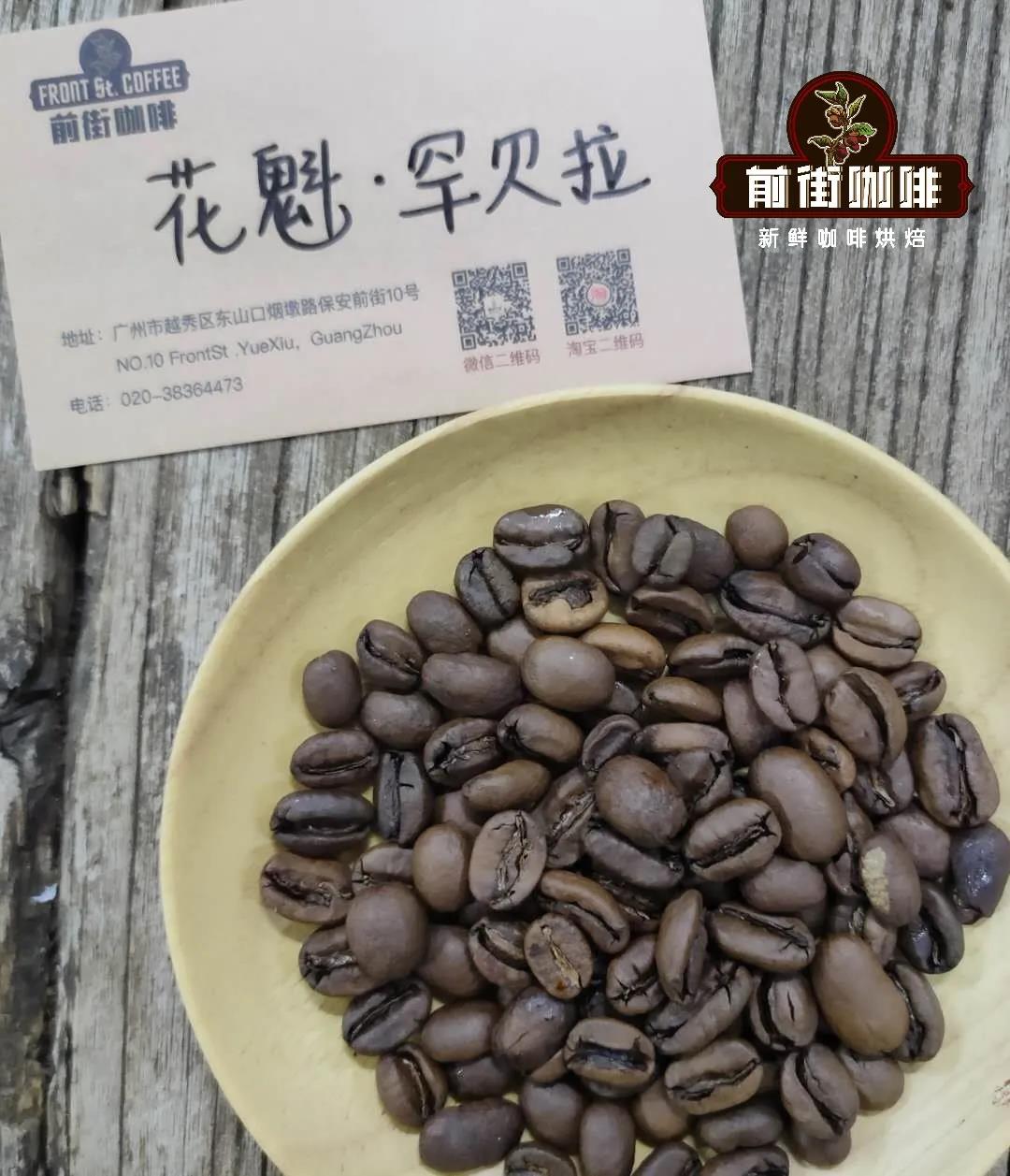
Now Sakui has developed to version 4.0, and the original Sakuran has been included in Sakuran 2.0 and Sakui 3.0. Qianjie Coffee found that its flavor is very close to that of the original Sakuran in the above two-year batches of beans, but the mellow thickness and afterrhyme are not as good as the original Sakuran in 2017, but surprisingly, Qianjie Coffee can sometimes get from these two batches of raw beans. Identify the same raw beans as the original Huakui batch. As for Sakui 3.1, Qianjie Coffee was found to be far away from Sakui, but closer to the flavor of Rose Summer (not referring to the Rose Summer of Panama, but similar to the Rose Summer flavor of Rose Village, these two are actually completely different styles of beans), Qianjie Coffee also confirmed this change from the importers of raw beans. It is rare for beans with multiple flavors to appear in the same bean in the same year. If you understand the origin of Sakuran, and then understand its development and changes after winning the championship, you will understand the reasons for the inconsistent flavor. This is why Qianjie Coffee continues to dig coffee beans from all over the world. Only by constantly trying can we understand the changes.
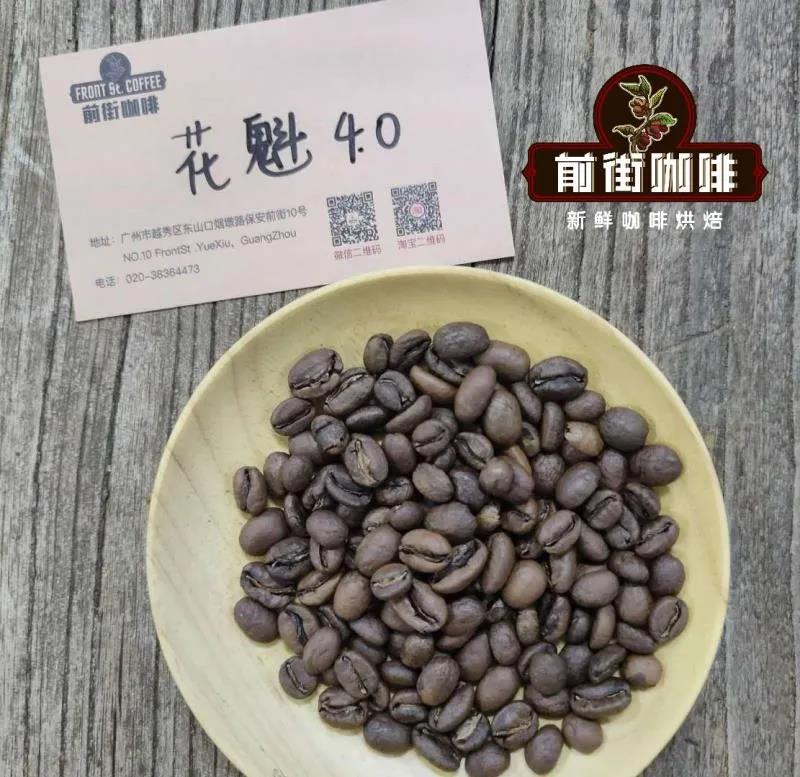
3. Lim (boutique producing area): 1200m to 2000m above sea level (pastoral, forest, semi-forest, planting farm coffee system)
The output is relatively small, and it is mainly exported to Europe and the United States, but it is not easy to buy in Taiwan, but it is very popular in Europe and the United States. there are three treatment methods: washing, tanning and semi-washing. Lim's body will be significantly less viscous, and the floral and citrus flavors will be inferior to those of Yegashifi and Sidamo, but with a hint of grass and black sugar, and bright acidity.
4. Hara (boutique producing area): 1500 to 2400 meters above sea level (pastoral coffee system)
Hara exclusive sun, is an ancient city in the east, but the city does not grow coffee, the so-called Hara coffee refers to the coffee produced by Haraji high and low in the Great Hara area. As the annual rainfall is only 1000 mm, all of them are treated in the sun. Hala caffeine is famous for its special aroma, which is typical of the early morning flavor in ancient times. she is tied with Yegashifi [double star].
If Hara's defective beans can be picked out, it is easy to drink berry aromas with slightly pleasant fermented aromas. However, due to various factors, the quality of Hara coffee is unstable in recent years, and the grading system is not true, so you must test or try it when you buy it.
5. Jinma (bulk commercial bean producing area): 1350-1850 m above sea level (forest / semi-forest system)
Jinma is the capital of Kafa Forest or Kafa province. The English spelling is very messy. Most of the maps are jimma, but the coffee sacks are spelled into Djimmah. This is the largest coffee producing area in Ethiopia, accounting for 1 per cent of exports.
Kafa Forest is famous for its primitive wild varieties. Jinma is the distribution center of Kafa in this area. Farmers are used to picking and transporting the forest to Jinma, and then mixing hundreds of varieties together to sell as commercial beans, resulting in the aroma of many delicious varieties being masked.
Water washing boutique Jinma, although there is no Yega Xuefei orange fragrance and flower rhyme, the taste spectrum is also quite clean, similar to the Central American boutique. Commercial-grade boutique Jinma is very common in Taiwan, and luckily you can buy high-quality and inexpensive Jinma, which can drink the fragrance of lemon peel, which is not inferior to that of Sidamo. Overall, Jinma has a better flavor than Brazil's bulk commercial bean Santos, making it a good medium-to-low-priced formula bean.
6. Yilu Babo (bulk commercial bean producing area): altitude 1350-1850 (forest / semi-forest coffee system)
This area is located in the west of Ethiopia, bordering Sudan, and is the most convenient producing area in the west. the complexity of coffee gene is only second to that of Kafa forest, beans are obviously larger than those of Yegashifi and Sidamo, low acidity, good viscosity and balanced flavor. Most of the coffee here is transported to Jinma to be mixed, rarely sold independently.
7. Jinbi, Lehchuti (bulk commercial bean producing area): altitude 1500-1800 (forest / semi-forest coffee system)
There are sun-washed and water-washed beans in this area, long-bodied beans similar to Hara, and a few boutique grades are quite popular in Europe and the United States. Most of the Hara, known as the poor, has a sour and fruity flavor due to Yilu Babo, with a bright flavor.
8. Tiebi, Bebeca (bulk commercial bean producing area): 500-1900m above sea level (pastoral / forest / semi-forest coffee system)
The two producing areas are very close. Tiebi has an enterprise-managed coffee plantation in the north of Bebeca. In recent years, it has promoted the pastoral system and increased farmers' income, with an annual output of about 3000 tons. Both places have wild coffee, the yield is not high, the flavor is very different from Hara and Yega snow coffee, low acidity is the biggest feature, suitable for formula beans, sun and water washing.
9. Tana Lake (alternative producing area): 1840 meters above sea level (forest system)
Monastery coffee, the annual output of the surrounding forest coffee is very small, less than 10 tons, in fact, can not be called the producing area, the lake area is full of Orthodox monasteries, churches, religious murals and myths, creating the most "divine" coffee in the world.
European monastic academics opened up a local coffee growing industry, which was later run by coffee communities or cooperatives in villages around the town. There are no special plantations here, and coffee trees are naturally scattered in the forest and countryside. During the harvest season, the Ethiopian Coffee Trading Company goes to town to buy coffee beans collected by farmers.
Red Cherry Project
The so-called red cherry actually refers to the red cherry project, jointly launched by Dutch trader Trabocca and local farmers, aimed at improving the quality of small-scale farms and picking coffee fruits, not only the fruits with high maturity of full red, but also by hand, but this is only the most basic requirement. There are also corresponding requirements for the treatment of coffee beans.
The red cherry project is also a reinforcing method, which makes the farm pay more attention to the process of selecting beans, and the prices of these coffees are also relatively high. the main producing areas are Yega Sheffield, Sidamo, Penga Forest, Lekanti, Ken Bata, Irubaba, Hara, Lim and so on. These are unique flavors and can fully show the flavor of Ethiopian coffee. However, Qianjie Coffee believes that, in fact, all boutique coffee is produced in the way of the red cherry project, but the unique term of red cherry coffee still belongs to Ethiopia, and the produced red cherry coffee will be printed with Trabocca on the sack.

Ethiopian coffee varieties
Nearly 2000 varieties of coffee beans in Ethiopia have been recorded (of which 1927 are native varieties and 128 are imported varieties). Ethiopian coffee does not distinguish between varieties and cultivation, which leads to the mixing of coffee beans at harvest, resulting in a marked uneven size of coffee beans in appearance, and the label on coffee varieties is usually dominated by the name "native species".
However, Qianjie Coffee found that at COE held in Ethiopia this year, the description of coffee varieties is no longer "native species." there are 74158, 74110, etc., represented by numbers, and KURUME can be like honey and TYPICA iron trucks. Qianjie Coffee sold 22nd coffee beans, a variety of iron pickups, located in West Arsi West ARSI in Sidamo, which is far less famous than Yegashefi and Gouji, but nine of the 28 beans awarded by COE this year came from this area.
Ethiopian coffee bean treatment
Essel's coffee is mainly treated by sun and water washing, of which water washing accounts for a large proportion. The biggest difference between washing and insolation lies in the role of coffee pulp. After the ripe coffee fruit was selected by washing method, the peeled and peeled pulp was washed and fermented, and finally dried to 12% water content. The rule of sun treatment is to omit the process of washing and fermentation, directly drying the selected ripe coffee fruit until the moisture content is 12%, and then remove the peel and pulp.
If it is the first time to try Ethiopian coffee beans, Qianjie Coffee recommends that you try the washed coffee beans first, because the washed coffee beans will better reflect the original flavor of Ethiopian coffee beans, clear acidity and elegant flower and fruit aroma. Sun-treated coffee beans will add aroma and sweetness on this basis.

Grading of Ethiopian coffee beans
ECX (Ethiopian Commodity Exchange Ethiopian Commodity Exchange) defines the defect rate of coffee beans according to its classification, which is G1 and G2 respectively. G1 represents less than 3 defective beans per 300g raw beans, G2 represents 4-12 defective beans per 300g raw beans.
In addition, there is a graded definition of flavor evaluation. G1 and G2 coffee beans are evaluated by SCA American Fine Coffee Association Cup, and the coffee beans are rated as Q1 with more than 85 points and Q2 with 80-84.75 points.
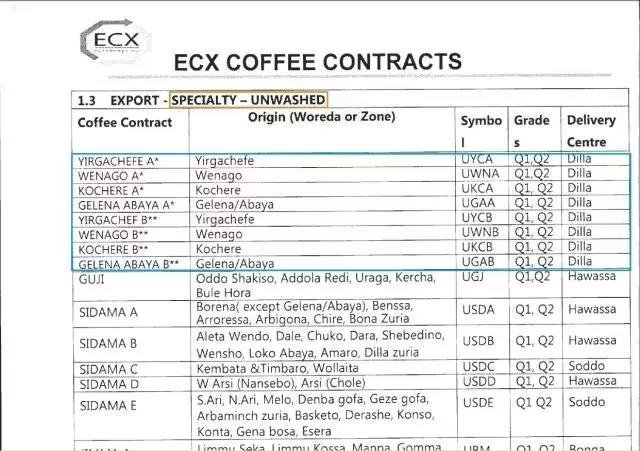
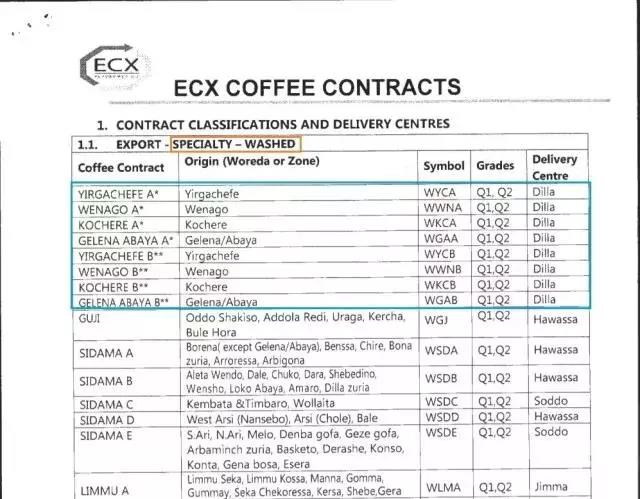
Ethiopian Yega Xuefei coffee beans
Ye Jia Xuefei coffee roasting suggestion
The most iconic flavor of Yejiachefi coffee is its delicate acidity and rich floral and fruity aromas. in order to maximize this flavor, Qianjie Coffee believes that light roasting is the most appropriate. Whether sun-treated or water-washed Yegashifi coffee beans can maximize their special flavor under light roasting. However, there are also moderately roasted coffee on the market, which slightly weakens its acidity in taste and enhances its mellow thickness. It depends on personal preference to choose. In the mainstream, it is mainly light roasted coffee.
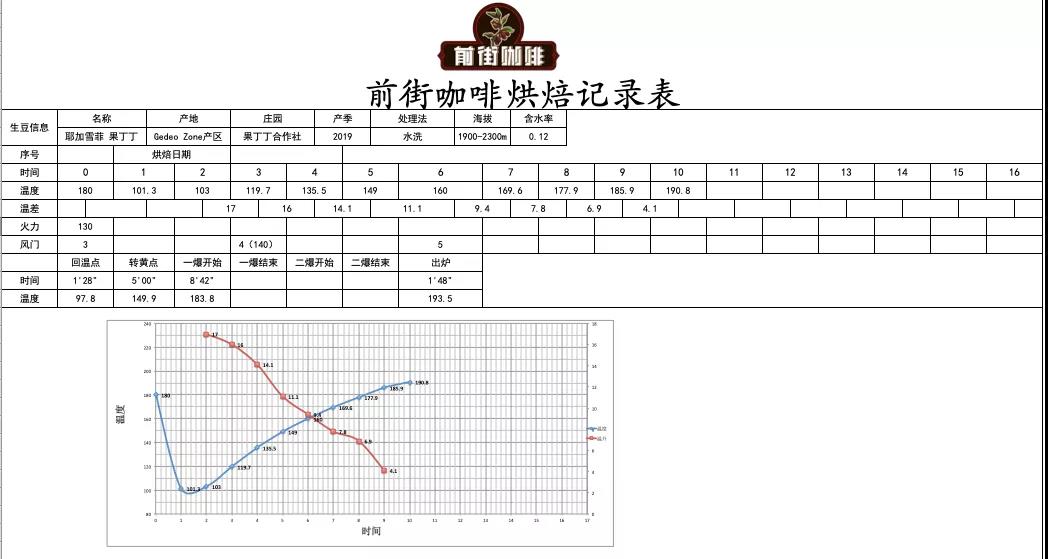
Qianjie Coffee Water washing Yega Xuefei Coffee Bean Baking Curve

Qianjie Coffee Sun Baking Curve of Yega Chuefei Coffee beans
Ye Jia Xuefei coffee brewing suggestion
Qianjie Coffee recommends using V60 filter cup for lightly roasted coffee beans, the water temperature is about 90 ℃, the ratio of water to powder is 1:15, the amount of powder is 15g, and the grindness is BG#5F (the pass rate of China No. 20 standard sieve is 80%).
Qianjie coffee is extracted by stages, the amount of steaming water is twice as much as that of coffee powder, that is, 30 grams of water is steamed for 30 seconds, the small flow is injected around to 125 grams, and the water level is about to be exposed when the powder bed is about to be exposed, continue to inject water to 225 grams to stop, the whole extraction time is 2 minutes.

Flavor description
Sun-baked Ye Jia Xue Fei Coffee: There is a light fermented wine aroma, rich taste, citrus fragrance, sweet honey, cocoa flavor, lasting finish.
Washed Ye Jia Xue Fei Coffee: Acid will be more bright and lively, citric acid, citrus fragrance, taste fragrance, some black tea after the section.
In general, sun-dried and washed coffee and sherry coffee are fruit acid, fruit juice, similar to lemon citrus fruits.
Ethiopian Sidamo coffee beans
Sidamo Coffee Roasting Advice
In fact, the idea of sidamo coffee roasting is similar to that of yejia sherry coffee, both of which emphasize its bright berry tonality. Front Street Coffee believes that light roasting is the most appropriate. The following is a demonstration of the former Street Coffee Sidamo 4.0.
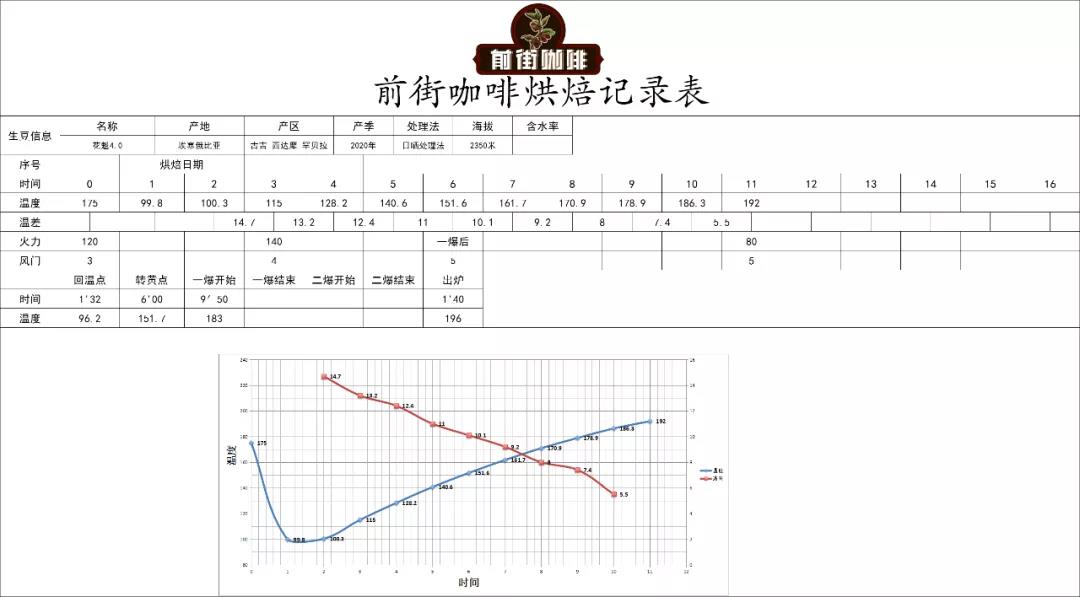
Qianjie Coffee Sidamo words Huakui 4.0 Coffee Baking Curve
Sidamo Coffee brewing suggestion
Qianjie Coffee recommends using V60 filter cup for lightly roasted coffee beans, the water temperature is about 90 ℃, the ratio of water to powder is 1:15, the amount of powder is 15g, and the grindness is BG#5H (the pass rate of China No. 20 standard sieve is 80%).
Perhaps sharp-eyed readers will see that the degree of grinding of this coffee bean in Sidamo is different from that of Yega Xuefei mentioned earlier, and the degree of grinding of each coffee bean will be different, because of the variety, altitude, treatment, roasting and other factors. so Qianjie Coffee will sift through it to determine the appropriate hand grinding when it gets a roasted new bean.

Qianjie coffee is extracted by stages, the amount of steaming water is twice as much as that of coffee powder, that is, 30 grams of water is steamed for 30 seconds, the small flow is injected around to 125 grams, and the water level is about to be exposed when the powder bed is about to be exposed, continue to inject water to 225 grams to stop, the whole extraction time is 2 minutes.

Flavor description
Citrus sour, full berry juice, strawberry, cream, lemon black tea, long-lasting sweetness.
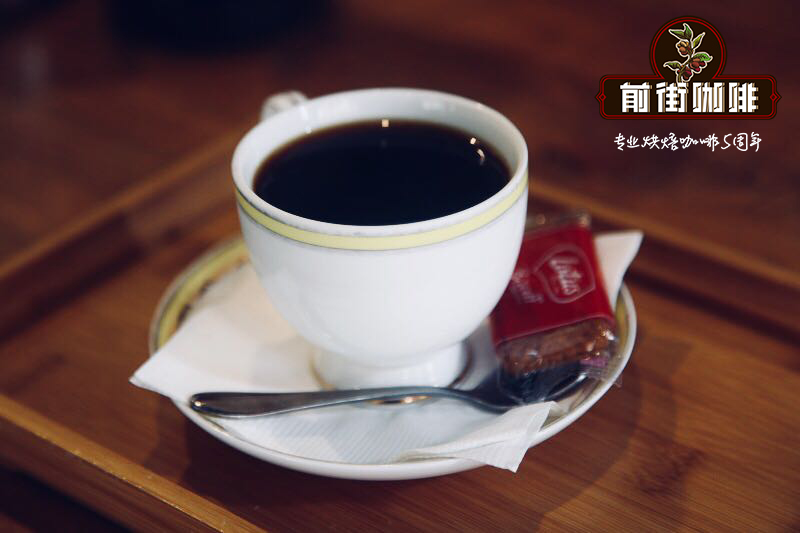
For more boutique coffee beans, please add private Qianjie coffee on Wechat. WeChat account: kaixinguoguo0925
Important Notice :
前街咖啡 FrontStreet Coffee has moved to new addredd:
FrontStreet Coffee Address: 315,Donghua East Road,GuangZhou
Tel:020 38364473
- Prev
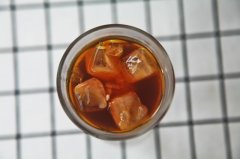
General situation of Coffee Bean Brands in Ethiopian Market what kind of coffee beans to buy in Ethiopia
For more information on coffee beans, please follow Coffee Workshop (Wechat official account cafe_style) Ethiopia is a landlocked country in northeast Africa located in the Horn of Africa, bordered by Eritrea (Eritrea) to the north, Djibouti (Djibouti) and Somalia to the east, Sudan and South Sudan to the west, and Kenya to the south. Ethiopia has a population of over 90 million.
- Next
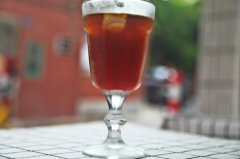
Ethiopian Coffee Brand Harar Coffee Features What to Buy Coffee in Ethiopia
Professional coffee knowledge exchange More coffee bean information Please pay attention to coffee workshop (Weixin Official Accounts cafe_style) Legend has it that in the sixth century AD, there was a shepherd in Ethiopia. One day, he found that his sheep were suddenly excited and jumping around. After careful observation, it was found that the sheep had this reaction because they ate a red fruit. He tried to distribute the fruit
Related
- Detailed explanation of Jadeite planting Land in Panamanian Jadeite Manor introduction to the grading system of Jadeite competitive bidding, Red bid, Green bid and Rose Summer
- Story of Coffee planting in Brenka region of Costa Rica Stonehenge Manor anaerobic heavy honey treatment of flavor mouth
- What's on the barrel of Blue Mountain Coffee beans?
- Can American coffee also pull flowers? How to use hot American style to pull out a good-looking pattern?
- Can you make a cold extract with coffee beans? What is the right proportion for cold-extracted coffee formula?
- Indonesian PWN Gold Mandrine Coffee Origin Features Flavor How to Chong? Mandolin coffee is American.
- A brief introduction to the flavor characteristics of Brazilian yellow bourbon coffee beans
- What is the effect of different water quality on the flavor of cold-extracted coffee? What kind of water is best for brewing coffee?
- Why do you think of Rose Summer whenever you mention Panamanian coffee?
- Introduction to the characteristics of authentic blue mountain coffee bean producing areas? What is the CIB Coffee Authority in Jamaica?

